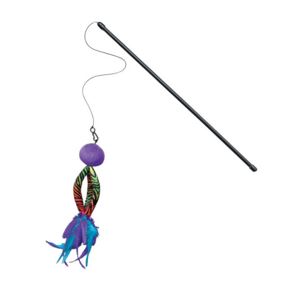We all know that cats usually tend to do their own thing. Most don’t have any interest in doing anything they don’t feel like doing on their own terms, while some may be enticed with catnip or a dangling string. Depending on the temperament of your cat, you may be able to train him or her. You probably won’t be able to train her to roll over, shake, or to leave your tuna alone (that takes some special training talent), but teaching a cat to come when called can be vital in emergency situations.
Picture this: for whatever reason you need to evacuate your house. Your cat is hiding under the bed or on top of the cabinets out of reach. If you have properly trained your cat to come when her name is called, you will have a better chance of getting her out of danger in time. Hopefully you and your pet will never be faced with a situation like this, but it’s always better to be prepared.
It is best to start training your cats when they are young. Remember to always be consistent, many of the same principals involved in training a dog also apply to training a cat. It’s very important to end each training session on a positive note with lots of praise and petting so that your cat associates training time with positive sensations.
 Start by assessing whether or not your cat is a good candidate for training and finding a reward that motivates your particular pet. Active, curious, food motivated cats are usually the easiest to train, while (for obvious reasons) uninterested, lazy cats are a bit more difficult. If your cat is the lazy and unmotivated type, it may take some effort to find a tempting treat or toy they can’t refuse. For some it’s a piece of tuna, for others it could be a catnip toy or a crunchy paper bag, it may take a little experimentation.
Start by assessing whether or not your cat is a good candidate for training and finding a reward that motivates your particular pet. Active, curious, food motivated cats are usually the easiest to train, while (for obvious reasons) uninterested, lazy cats are a bit more difficult. If your cat is the lazy and unmotivated type, it may take some effort to find a tempting treat or toy they can’t refuse. For some it’s a piece of tuna, for others it could be a catnip toy or a crunchy paper bag, it may take a little experimentation.
To teach your cat to come when called, you will want to start out in the same room as the cat. Time training sessions around feeding times, it can help the training to be more successful. You can call out your pet’s name or pair your calling with a recognizable noise, such as a fork tapping the food can or shaking the bag of treats. Once the cat associates the sound of its name and/or the additional sound as a signal to come running, you can vary the training by moving to different rooms and changing situations. Eventually, calling the cat from a different location and at different times will evoke the same “come hither” response.
Thanks,
Heather
 That Pet Blog That Pet Place Pet Blog
That Pet Blog That Pet Place Pet Blog

